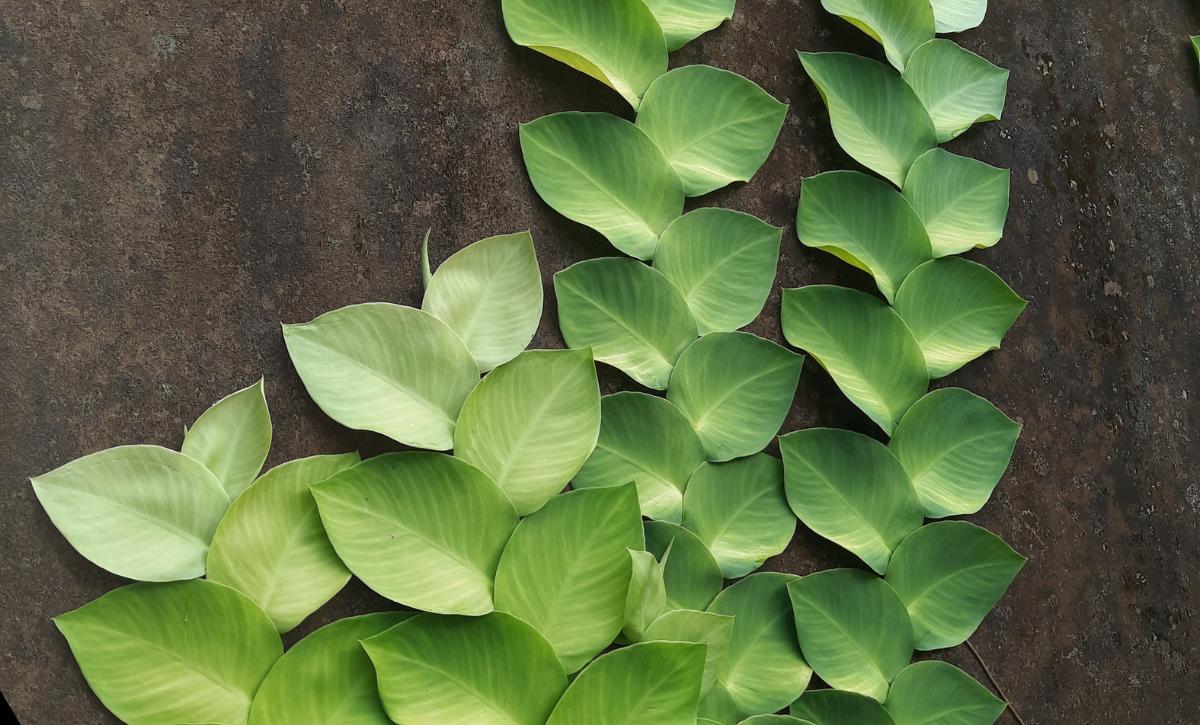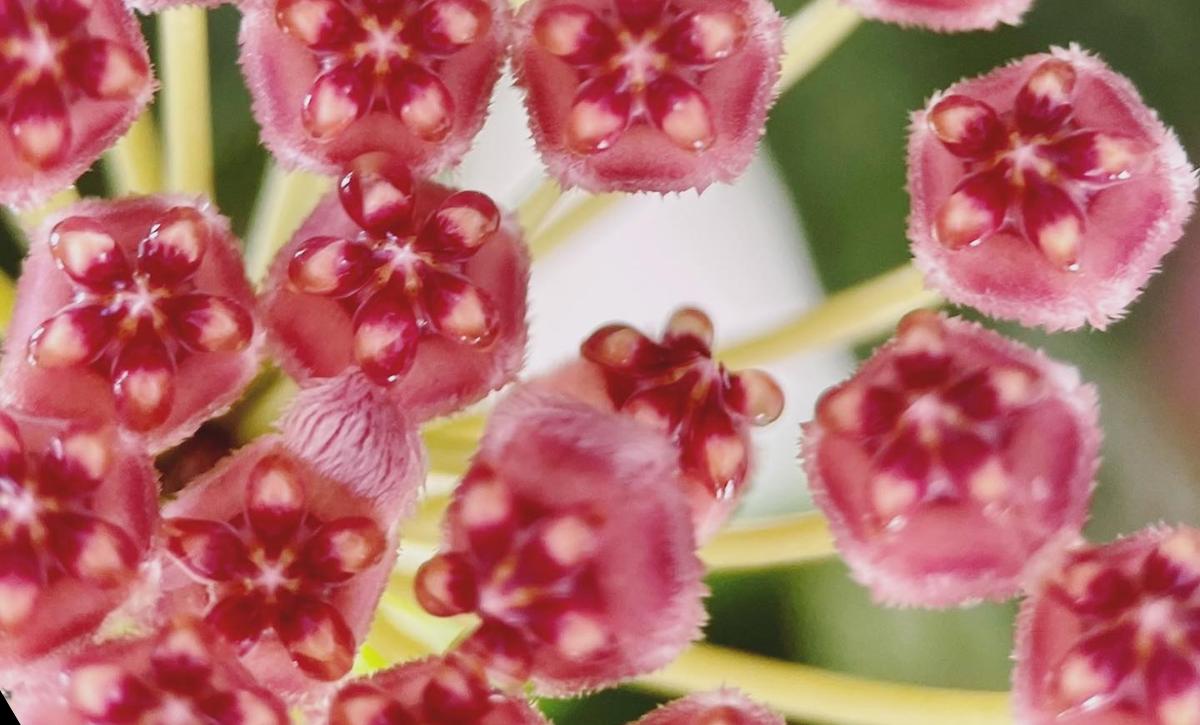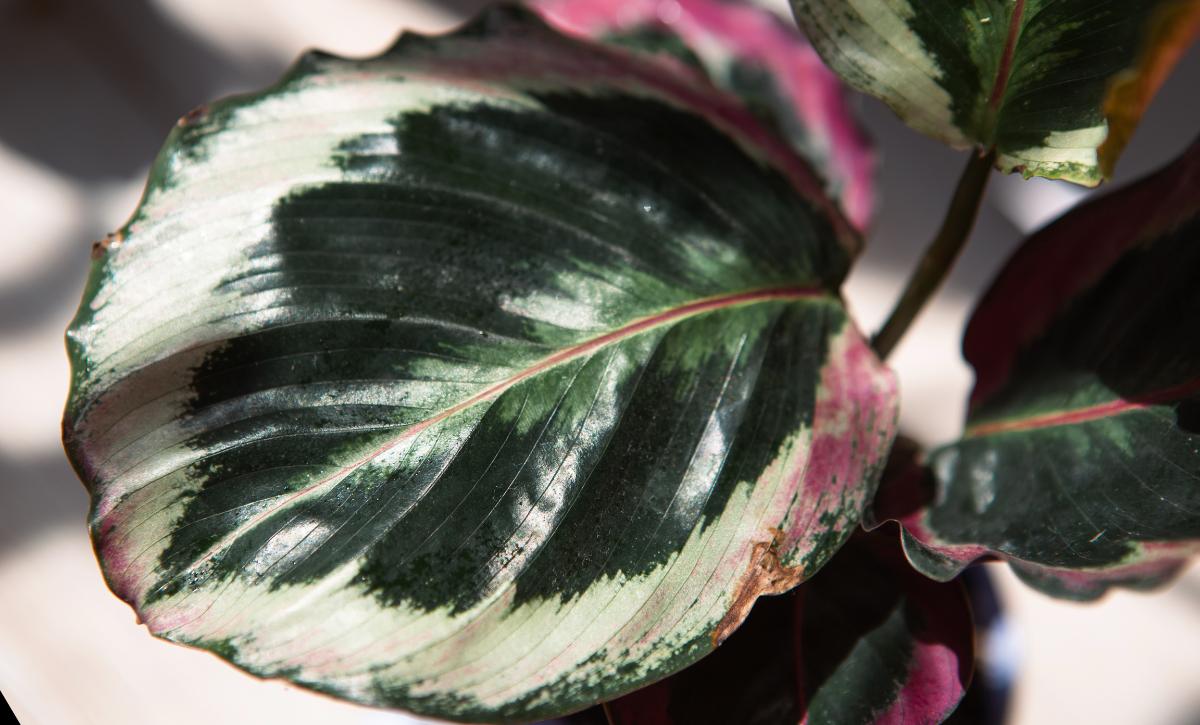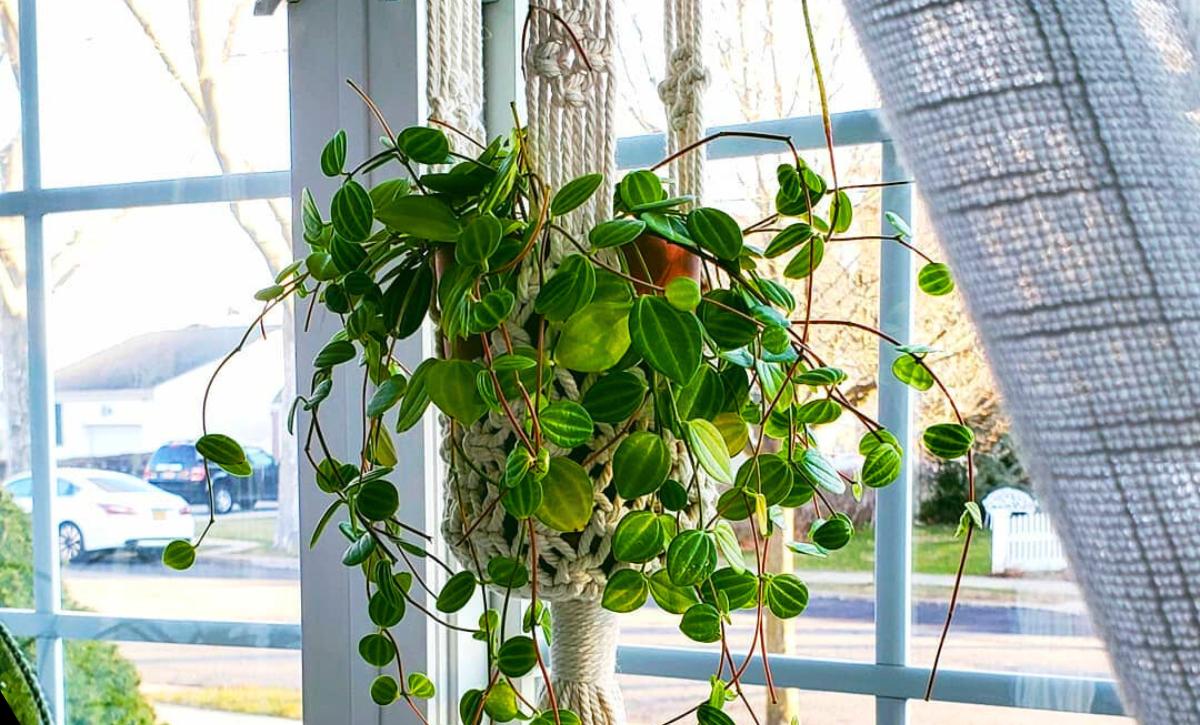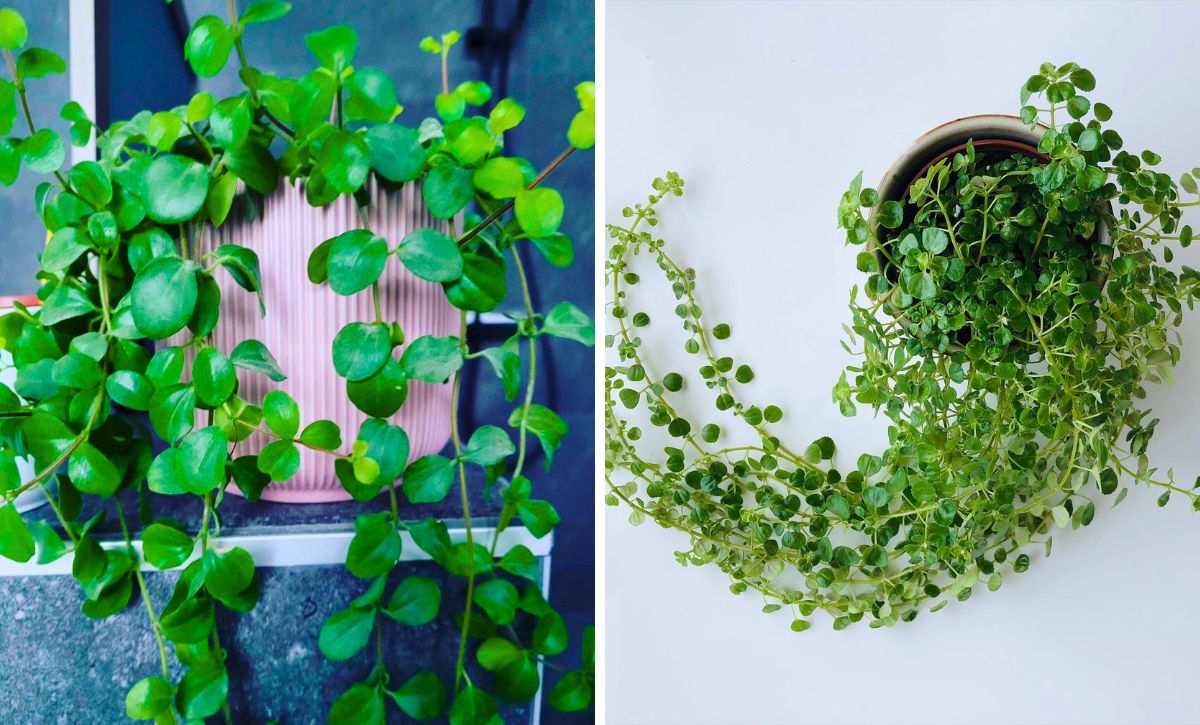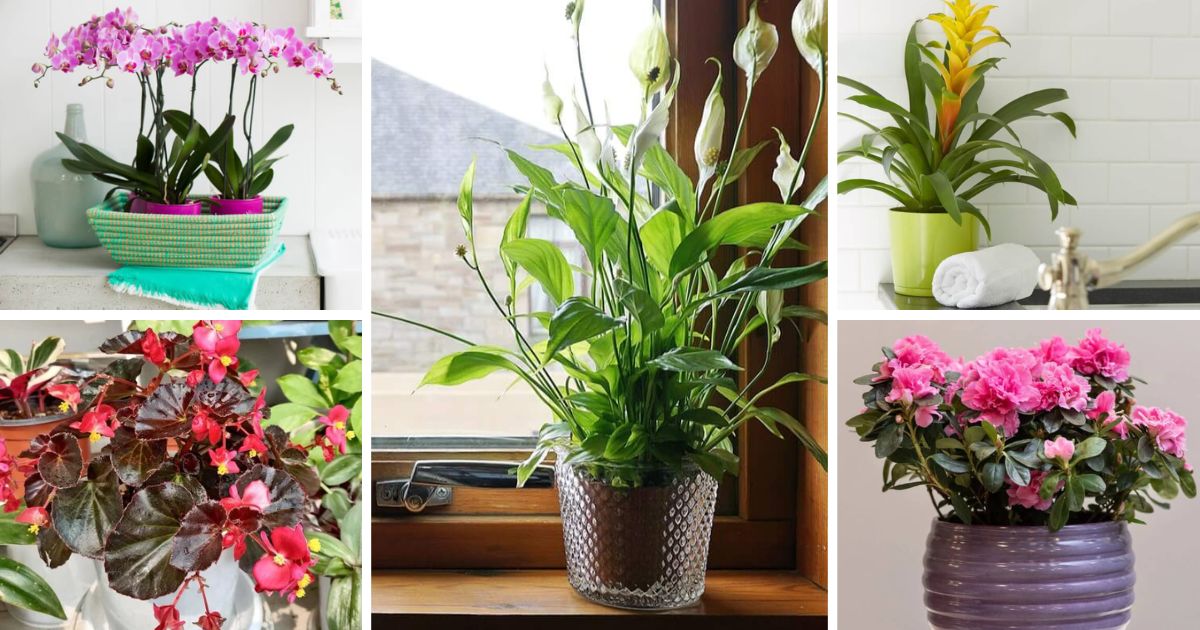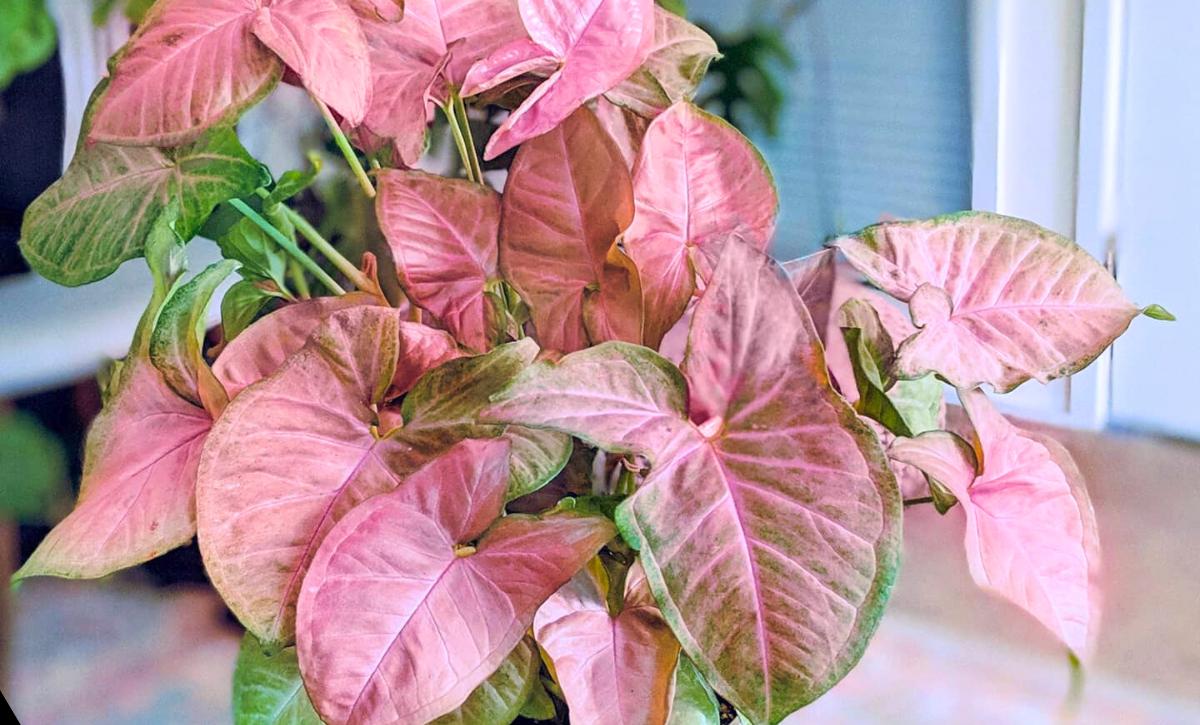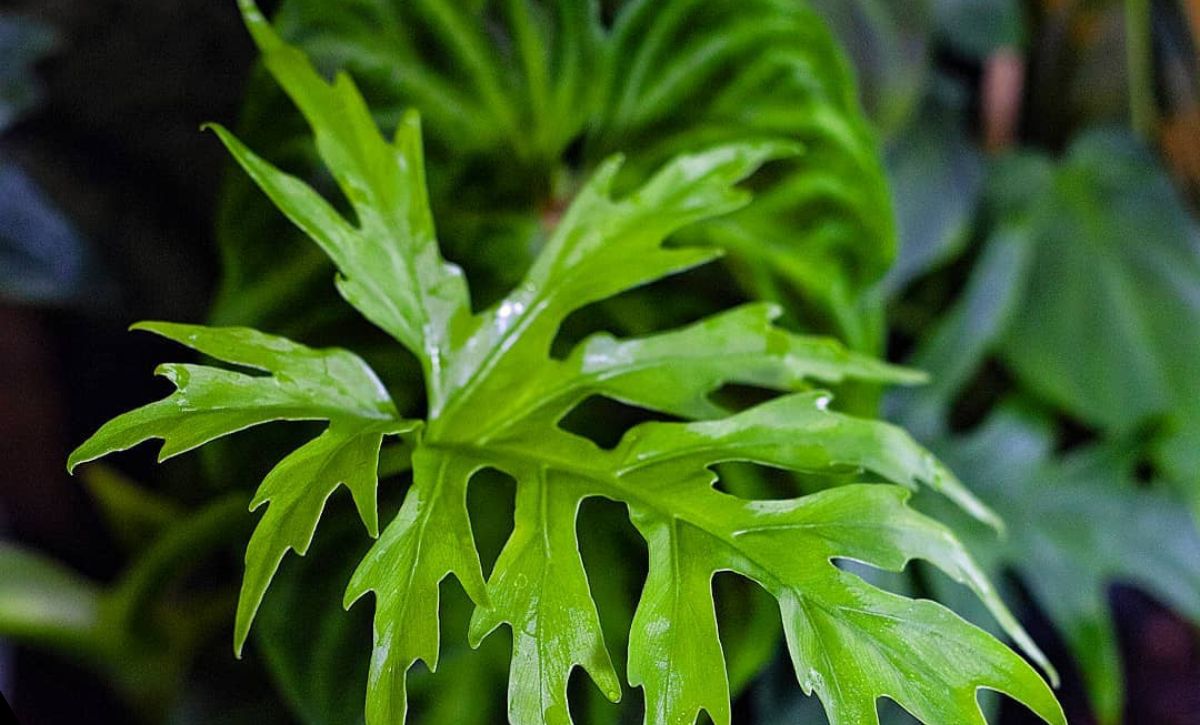The Calathea Roseopicta is one of the prettiest houseplants that you can get. This plant, whose native habitat is the rainforests of South America, has unique and interesting color combinations.
It has been nicknamed the rose-painted Calathea, a name that truly reflects its uniqueness. If you want to veer away from the normal and try a rose-painted plant, then this Calathea is the plant for you.
The uniqueness of the plant is compounded by the fact that it belongs to the prayer plant family. Plants in this family fold up at night, making them look like they are praying, hence the name.
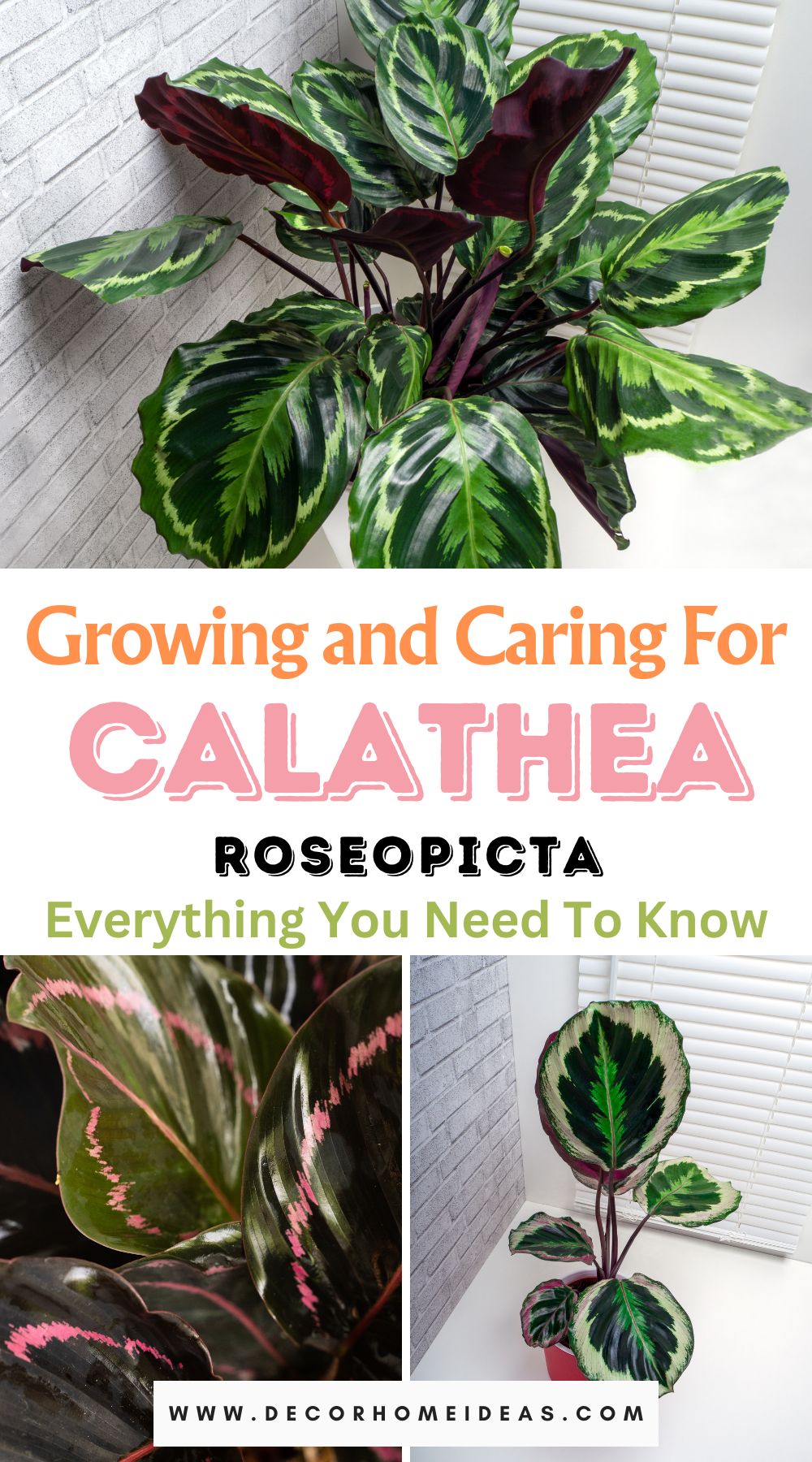
While the care requirements of the Roseopicta may be considerably fussy as compared to other plants, the beauty and interest that these plants attract make them worthy of going the extra mile. In this article, we discuss all you need to know about Calathea Roseopicta and how to take care of it.
Before we get into the details, here is some basic information about this plant:
| Family: | Marantaceae |
| Genus: | Goeppertia (formerly Calathea) |
| Scientific name: | Goeppertia roseopicta (reclassified) |
| Common names: | Prayer plant, Calathea roseopicta, rose-painted Calathea |
| Plant type: | Evergreen, perennial |
| Native habitat: | Brazil, Colombia, Ecuador, and Peru |
| USDA hardiness zones: | 10-11 |
What is the Calathea Roseopicta
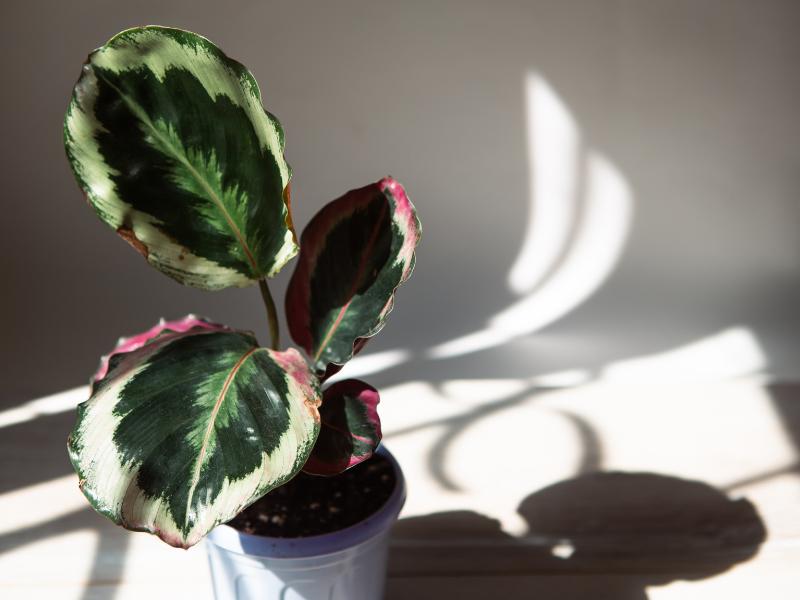
Before we get into the details about this plant’s appearance, we need to clarify one thing.
The Calathea Roseopicta was reclassified to the Goeppertia roseopicta. While Calathea is still an accepted synonym of the plant, the real scientific name has changed.
Now, to the interesting part. What makes this plant so unique is its uniquely colored, broad, dark leaves. The leaves seem to have been painted with vivid pink and white patterns.
The pink color is usually present when the plant is young, and as it matures, the color fades away to the whitish pattern.
And that’s only half of it! The undersides of roseopicta leaves are reddish purple, and since it’s a prayer plant, as nightfall approaches, the leaves will fold, bringing a combination of dark green and reddish purple to your space that blends seamlessly. This is one of the plants that proves that Mother Nature is the greatest architect.
The leaf movement of prayer-plants at night is known as nyctinasty.
Rose Painted Calathea Varieties
Calatheas were first discovered in the 19th century, and over time, many hybrids of the plant have been created.
The common varieties of Calathea include the Calathea Ornata, Calathea white fusion, Calathea faciata, and Calathea Maui queen.
From these varieties, several hybrids have been created.
Here is a list of some of the common Roseopicta hybrids:
- Calathea roseopicta Medallion: Medallion has large green leaves with silverish and emerald green tones covering the midrib. The undersides of the leaves are reddish purple.
- Calathea roseopicta Rosy: The doty variety has oval-shaped leaves with edges that are dark green. The center of the leaves is adorned by a pink hue, while the undersides are magenta.
- Calathea Roseopicta Eclipse: A striking variety that has dark green leaves with white edges and a fading pink hue.
- Calathea roseopicta Dottie: This hybrid is differentiated by deep dark green leaves that are almost black. The leaves have pink edges and centers.
How to Take Care of the Calathea Roseopicta
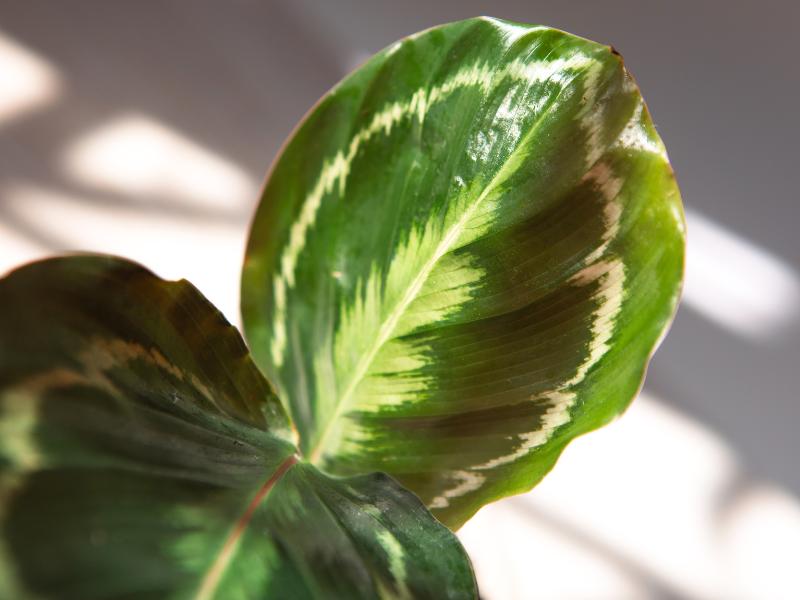
The Calathea roseopicta has stunning features, almost bewitching in its beauty.
However, with great beauty comes high maintenance! This plant isn’t low maintenance, and caring for it may prove to be difficult, especially for beginner gardeners.
The Calathea requires well-draining soils that are watered just after the two top inches become dry, bright indirect light, high humidity levels, moderate temperatures, and monthly fertilization.
Generally, Calathea plants will do well in similar requirements, but some species may tolerate a slight deviation. Unfortunately, Calathea roseopicta doesn’t fall into this category and will require close attention if you want it to thrive. It really is hard to impress.
Light Requirements of the Rose-Painted Calathea?
With the native habitat of the plant being in rainforest and in partially shaded areas, this plant thrives in indirect sunlight even though it may tolerate low light levels (you better stick to the requirements with this one).
When growing it indoors, the ideal place to position your plant will be close to the windows that receive indirect sunlight throughout the day. Exposing it to direct sunlight will cause the leaves to droop or color, and they may even fry up with intense sunlight.
Placing it in a dark room is just as deteriorating since the plant will become leggy and lose its beauty.
Place the plant in the North or east-facing windows at the windowsills. This way, the plant can receive enough direct sunlight without being exposed to intense sun rays.
It’s important to note that light levels may change the watering needs of the plant. So, if the light is too intense or too low, the watering requirements may significantly change.
Temperature Requirements
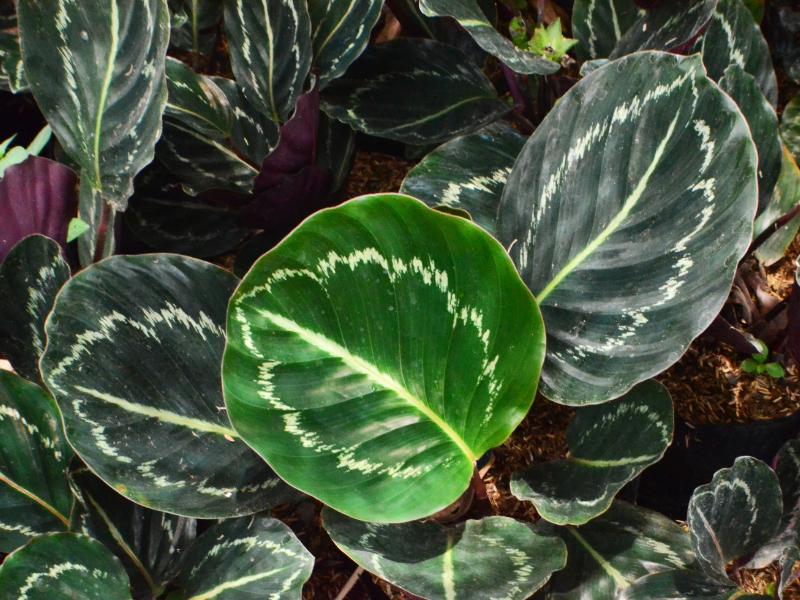
While some Calathea may tolerate slightly lower room temperatures, it’s important to remember that they’re used to warmer temperatures in their natural habitat in the tropics. When grown as indoor plants, you’ll need to maintain a temperature of between 65 and 85℉.
Luckily, the roseopicta can tolerate slightly lower temperatures, but temperature fluctuations will harm the plant.
The temperatures required by this plant make it challenging to maintain them during winter. This is because the heat generated by heaters can lead to significant damage to the plant. Air conditioners will also have a similar effect, so it’s best to keep the plant away from such equipment.
Roseopicta can thrive in USDA hardiness zones 10 and 11, where the plant can even survive outdoors. If temperatures drop below 60℉, shelter your plants indoors in areas where temperatures are suitable.
Don’t grow the plant outdoors if you live outside these hardiness zones, as it’ll likely not survive.
Humidity Requirements
Tropical areas often have high humidity levels, and as such, Calathea will thrive if the humidity conditions are similar to these regions.
Calatheas do well in humidity levels of 75%, even though they can survive in humidity levels as low as 50%. If the humidity levels get lower than this, the leaves will curl and become crispy.
There are several measures you can take to increase the humidity levels, such as misting the plant using a spray bottle every two to three days.
An alternative method is using a humidifier. While it may be costly, it’s also highly effective.
Another method that you can try is the pebble tray method, where you place the plant on top of pebbles in a tray filled with water.
An even easier way to increase humidity levels in your plants is placing them in rooms with naturally high humidity levels, like the kitchen and the bathroom, or grouping the plants close together.
Watering Requirements
Watering is the most challenging part of the Calathea roseopicta plant care guide.
This Calathea variety thrives in moist soils, so it’ll need regular watering. The challenging part is that if you water the plant too often and water accumulates in the soil, the roots will suffocate, and the plant may even develop fungal infections.
On the other hand, if you fail to water the plant for extended periods, it becomes too weak and frail, and it may even die.
Talk of being trapped between a rock and a hard place! But the solution to this dilemma is simple. Before watering the plants, check for the moisture levels in the soil. Low moisture levels indicate that it’s time to water the plant. Generally, if the top two inches of the soil are dry, then you should water it.
There is no specific watering schedule for the roseopicta simply because many factors will impact the watering needs. Temperature, humidity, and exposure to sunlight will all impact how you should water this Calathea.
During the hot summer seasons, the plant will need more water and less watering during the dormancy period, usually winter. Also, if the plant is low in humidity, you should increase the watering amount.
Watering Technique and Water Type
Watering is a really tricky business for Calathea Roseopicta because even the type of water you use should be taken into account. Tap water contains many minerals and compounds, some of which may impact the plant since it’s very delicate.
For example, fluoride and chlorine, which are common minerals found in tap water, can cause the Calathea leaves to turn brown.
Opt for distilled or filtered water for your plants. This type of water has minimal chemical content, so it won’t harm your plants.
Rainwater is, of course, the best water to use for the plant, but since it isn’t always possible to get rainwater filtered or distilled, it’ll suffice. If the only water you have is tap water, then let it sit overnight so that the concentration of harmful compounds such as chlorine decreases.
When watering, be careful not to wet the foliage as this could attract insects and pests that could kill the entire plant or cause fungal infections.
Ideal Soil for the Calathea Roseopicta
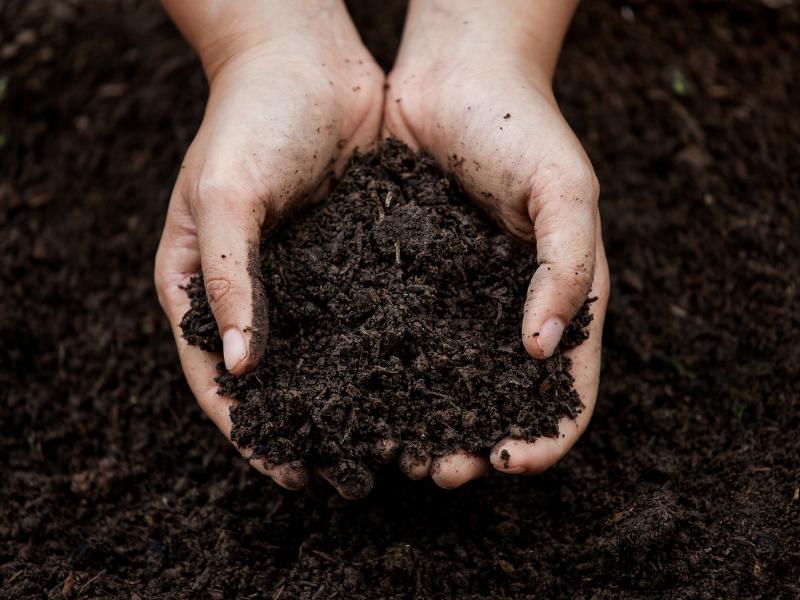
As mentioned earlier, the soil you choose for this plant has to be well-draining. Since rose-painted Calatheas need moist soils, they also need good water retention capabilities.
You’ll need to create the right soil blends to facilitate this. First, you need to choose the right base; regular potting soil will suffice.
Next, you have to amend the base with the right ingredients. This can include peat moss or charcoal, which help the soil retain moisture.
You can also add materials such as pumice, perlite, orchid bark, or coco coir to enhance the drainage ability of the soil.
An optimal soil blend will be something like 50% soil, 20% charcoal, 20% orchid bark, and pumice or perlite at 10%. This mix has a perfect combination of water retention and proper drainage.
Fertilizing Schedule
Now, here, you can take a breather! The roseopicta is fussy and needy over many things, but you won’t have to worry about fertilizing.
You can feed this plant with high-quality all-purpose fertilizer, and you are good to go.
Fertilization should be done once a month during the growing season as it’ll promote new and faster growth.
Since this fertilizer is grown for its beautiful leaves, you can use fertilizers that have rich nitrogen content that encourages lush foliage.
Avoid fertilizing the plant during the dormancy period, as it won’t be effective. Since the plant doesn’t absorb nutrients at this time, this could lead to chemical build-up in the soil, which will negatively impact the plant in the long run.
Pruning
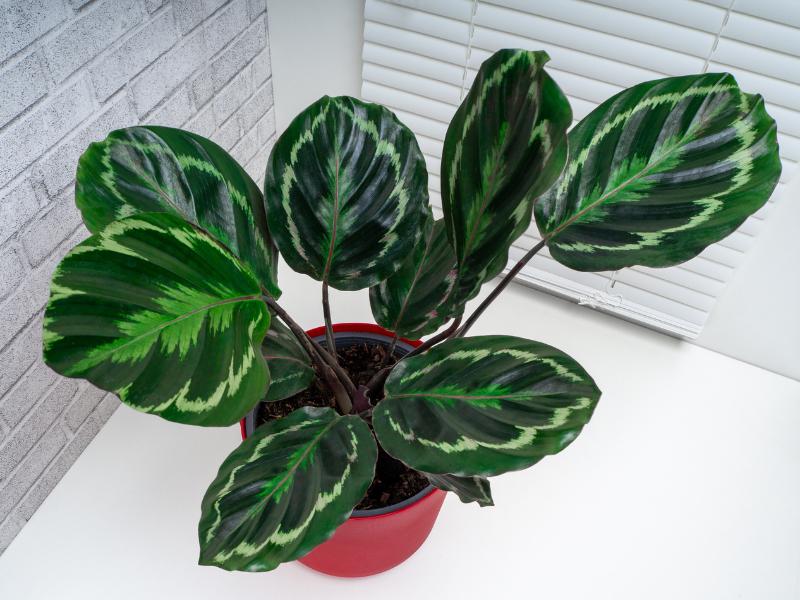
Even better news is that the rose-painted Calathea doesn’t need frequent pruning.
One of the conditions that may necessitate pruning is when you notice that the plant has discolored or diseased leaves. Use sterilized shears or a sharp knife to cut the leaves off.
If the leaf tips and edges are turning brown, then you don’t need to prune the leaves as the Calathea most likely has other issues that can quickly be resolved if you thoroughly inspect the plant.
Repotting
Calatheas aren’t fast-growing plants, so you don’t need to report them often.
Another factor that discourages repotting of this plant is its sensitive root system. Repotting the plant frequently may cause transplant shock.
You should repot the plant once you notice roots coming out of the drainage holes in your pot or above the soil line.
Repotting should be done at the beginning of the growing season, which is in early spring. Prepare fresh potting mix and transfer the plant to a larger pot.
Propagating the Geoppertia Roseopicta
Propagating is an easy way to get new plants without having to go back to the market.
Propagation may seem challenging, especially if you are a new gardener, but in the case of the Rose-painted Calathea, you’ll hardly struggle. The most effective method for generating new plants is root division.
Since this plant is susceptible to transplant shock, it should be divided in spring to reduce the stress levels that it experiences.
Here are the steps you should follow for propagation:
- Prepare a potting mix yourself, or buy a ready-made potting mix from a gardening store. Place this mix in a large container or a pot.
- Remove the plant from its primary pot by gently tipping it to one side and sliding out the plant.
- Remove the soil from the roots and gently brush them to remove any excess soil such that they are fully exposed.
- Look for a stem with a few healthy roots and use a sterilized or sanitized tool to cut them off.
- Now, inspect the roots for any signs of infections or damage and remove any infected roots with sanitized tools, of course.
- Divide the stems with healthy roots. Don’t use any tools for this process, as you could risk damaging the new sections you’re looking to propagate.
- Place the sections you have selected on the container or pot with the fresh potting soil. Fill out the pot with more soil such that the roots are well covered. Do the same for the mother Calathea plant.
- Water the new plants you have propagated and the mother plant and place them in a place where they can receive plenty of indirect sunlight.
Common Issues
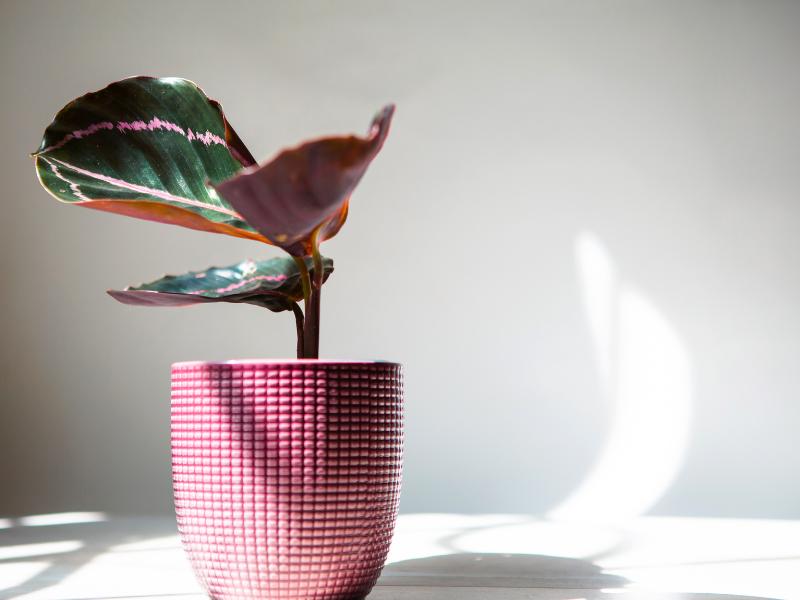
Like many other plants, houseplants will also experience issues when growing. Some plants are faced with more serious issues as compared to others. Luckily, Calatheas aren’t faced with significantly serious issues.
The common issues the plant faces are with regard to the leaves and a few pests and diseases that may attack it.
Let’s take a look at some common issues that your Georppertia Roseopicta may face.
Leaves Curling and Drooping
There are several reasons that may cause Calathea leaves to curl or droop. Factors such as overwatering, too much light, underwatering, the type of water used for watering, poor soil type, and pests may all cause this.
Luckily, you can easily remedy the situation if you notice it in time. Check on what may be causing the leaves to curl or drop, and follow the guide above to fix the plant.
Brown Leaves
Leaves turning brown in prayer plants is primarily because of low humidity levels. Once you notice the leaves of your plant turning brown, check on the humidity levels of the plant.
Another reason that leaves may turn brown is if you use the wrong water type for the plant.
Sometimes, it’s the edges of the leaves that start turning brown. This usually indicates low moisture levels as a result of underwatering. If this is the case, you’ll need to change your watering schedule.
Yellow Leaves
This is one condition you should be really worried about. Once Calathea leaves start turning yellow, the condition could take a downturn drastically if you don’t act quickly. You may even run the risk of losing the entire plant.
Yellow leaves may signify that your plant is dehydrated, under-fertilized, naturally shedding, and excessively exposed to direct sunlight.
Too much watering is also a common cause of leaves yellowing in the Calathea. If the leaves turn yellow and the soil is overly moist, water your plant less and place it in a brighter spot.
Sometimes, the leaves may be yellow as a result of the plant’s natural condition. For example, if the plant has recently been repotted, then some leaves may turn yellow and fall off.
Pests and Diseases
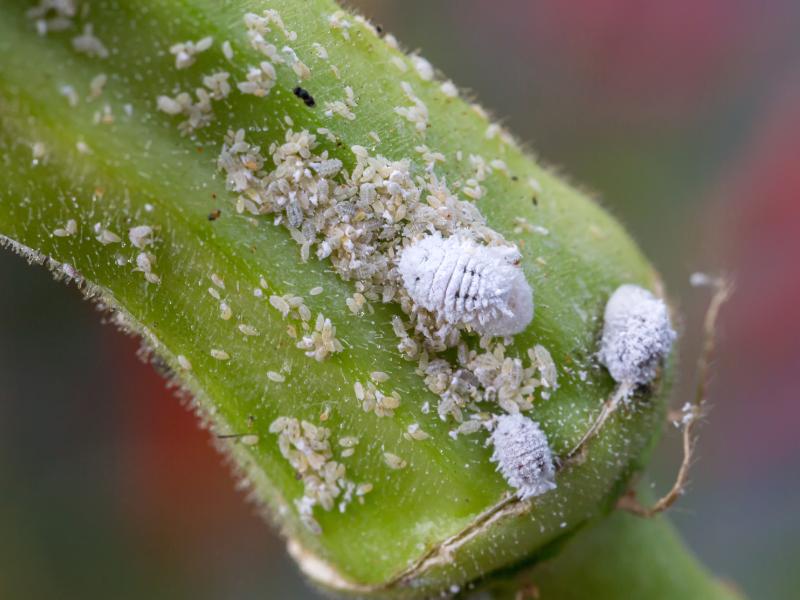
Pests are one of the nuisances you are likely to experience when gardening, no matter the plant.
Many of the pests that attack the Calathea are tiny and almost invisible to the eye but they are extremely destructive; their size really doesn’t do justice to their might.
Some of the pests you are likely to encounter on your plant are spider mites, mealybugs, scales, and, in some cases, fungi.
While they’re tiny and extremely difficult to see, if you are careful enough when examining them, you’ll notice the distinct symptoms that characterize each pest.
Pests like scales are characterized by a sticky substance on the leaves.
If your plant is being attacked by spider mites, you’ll notice some white or yellowish spots on the leaves and webbing,
On the other hand, Mealybugs will exhibit a white fuzzy substance on the leaves of the Calathea roseopicta.
While there are several ways to handle these pests, some of the most effective remedies include using neem oil, rubbing alcohol, or using insecticidal soap. In case of a severe infestation, then you’ll have to opt for chemical pesticides.
Diseases
Your Goeppertia roseopicta may suffer from diseases such as root rot that is brought about by excessive watering or soil with poor drainage. Some of the common signs of root rot include a foul smell from the soil and brown or black mushy roots, yellow leaves, and wilting. If you notice any of these signs, you should act with haste to save your plant.
The best way to handle the root rot problem is to repot the plant. First, you have to remove any affected roots with a sterilized tool and repot the plant in fresh potting soil and in a fresh pot or container.
Remember to use well-draining soil and pots with drainage holes.
Commonly Asked Questions
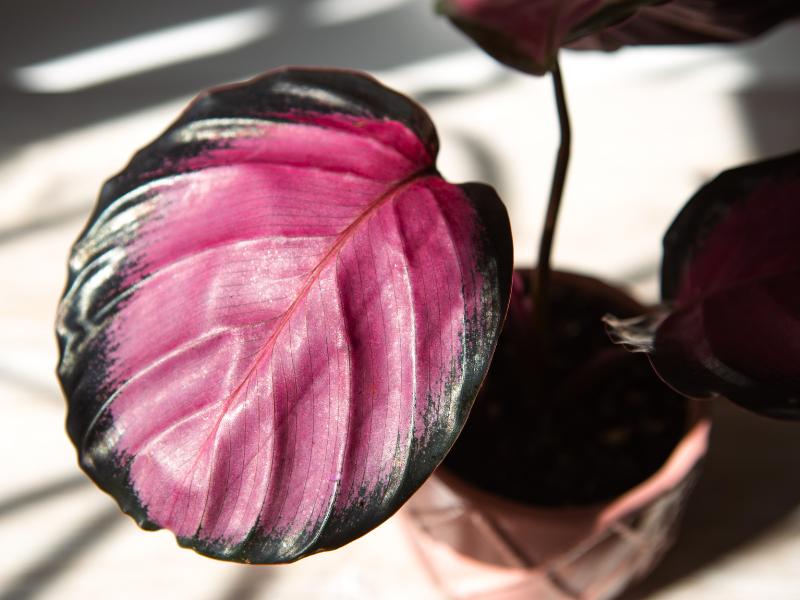
Is the Calathea roseopicta a rare plant?
No, the Goeppertia roseopicta isn’t a rare plant. While its leaves are unique, you can easily get this plant from reputable online vendors. However, hybrids of the plant, such as Cynthia and Corona, are fairly hard to find.
Is the Calathea roseopicta toxic?
One of the advantages of growing this Calathea as a house plant is that it’s not toxic to pets or humans, so it’s safe to keep in your home.
How long does the Calathea roseopicta grow?
The rose-painted Calathea is generally a bushy plant; it’ll grow to about 2 feet during the growing season and then stop growing in height and become bushier.
Summing Up
Growing a Calathea is one way to spice up your garden and add some interesting colors to break the monotony of green.
The Calathea roseopicta, aka rose-painted Calathea, aka Goeppertia roseopicta, is one plant that clearly exhibits the unique colors of this genus.
While it may be a bit challenging to take care of, I assure you this is one of the most beautiful plants you’ll ever grow.
Just follow the plant care guide that we have provided, and you’ll be marveling at the beauty of this plant in no time.

